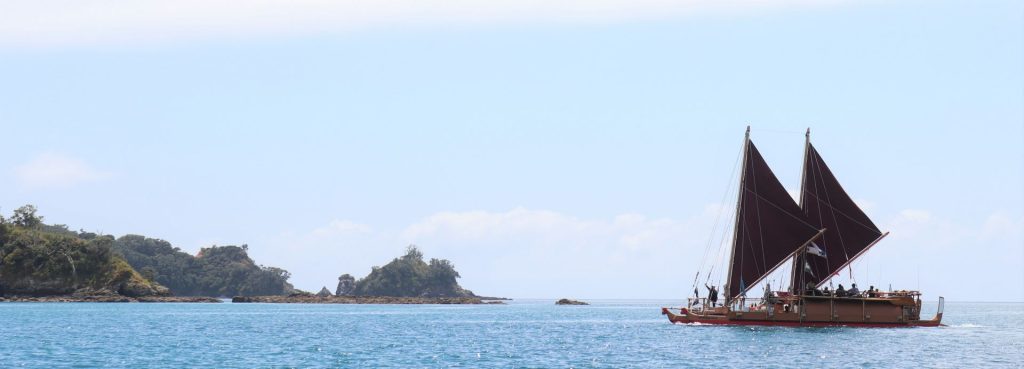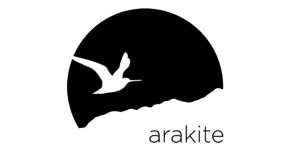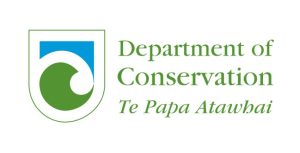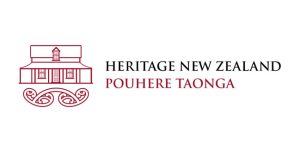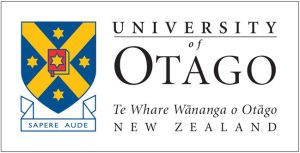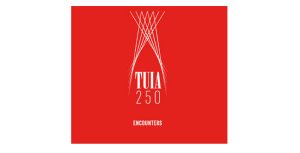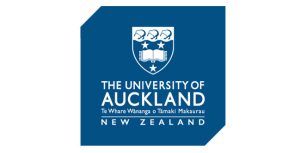James Eruera
Friday 23.08.19 Day 2: Session 2 James Eruera full session on “Aspects of Tarai Waka”
Jack Thatcher full session on “Traditional Navigation”
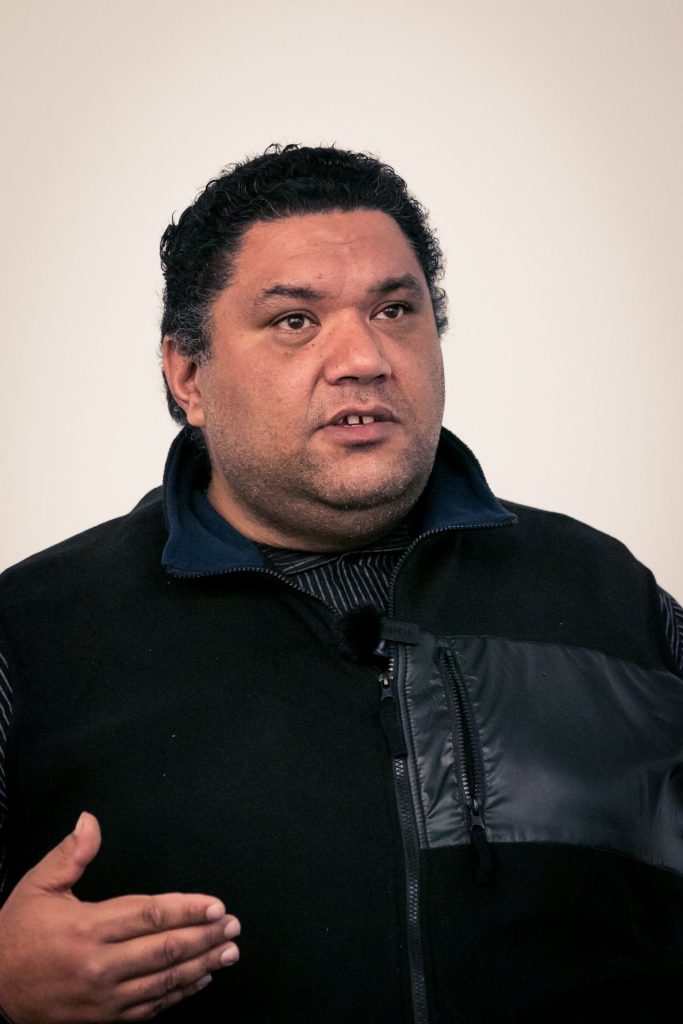
PRESERVING THE CONTINUITY OF MĀORI HOURUA WAKA
James Eruera
Honoured at the Smithsonian Institution as a craftsman and a repository of tradition in the handbuilding of seagoing waka, a convener of international conferences on the art and history of building wooden ocean-going vessels, Kaitaia-born James Eruera is a professor without a university. He recruits and trains students. He plans waka, builds waka, teaches waka, and sails in waka. He is a practicing missionary of his art. His experience and stature in the community meant the Voyaging Wananga would have been incomplete without his attendance. There he spoke more of other matters than of his craft, and so the Trustees sent Proceedings editor Bill Guthrie to learn more of Eruera’s korero. The following is Guthrie’s paraphrase of the audio recording of that interview.
Everything starts in the forest. Felling, shaping.
Hector Busby taught all of us that different experiences would draw out the tohunga in you, and we must find that quality. Heke-nuku-mai-nga-iwi Puhipi — Hec’s Maori name — called out the best in his colleagues and his students. We were not building so much on his knowledge, but that we were, together with Hec, reaching back to recover more than a thousand years of waka building and waka sailing wisdom, lore that had been lost.
Succession, continuity, inheritance, those guides were missing when the new wave of Māori waka building started. There was a millennium of waka building wisdom to recover. Even after 30 years of waka building for Hector, only two or three of us could do the whole job. I will be happy if out of my training there is even one who can do the whole job, from forest to launch. The work is hard, and the craft is harder to learn: planning, physical skills, knowledge of work, tools and materials. Leadership is the hardest part. No one person can do all the work. And the frame of one lifetime, to catch up, is so short.
From the tree to the sea. I came to live with my grandfather when I was nine years old. He passed when I was thirteen. I remember that grandfather asked for the radio to be turned on, as he was dying, so he could hear the reports of the maiden waka voyage to Raratonga. Grandfather knew about old navigation, spent his whole life on the water.
I think my grandfather knew important elements of traditional navigation. But he did not pass it on. Perhaps he did not know how to teach what he knew, because there is a difference between growing up in traditional ways, and then having to somehow put it in a book or a box and hand it to people who did not grow up that way, like me, or the young people around us. So I grew up admiring and loving my grandfather, and admiring his wisdom. But I did not have his wisdom. Succession in being tohunga, transmission of wisdom, apprenticeship in craft, these have been missing in modern Māori life.
Except for my grandfather’s example, and how I inherited motivation from him, I grew up missing the old way, too. Later I had been panelbeating on the South Island, then came to live with my sister in Whangarei. I was washing cars when Hec Busby put out a call: a wananga to develop crew to go to Easter Island. I said I was on that. Then another wananga, for people to build the boat. For six months I was strictly a volunteer. Hec saw I was committed. Nine years and sixteen waka later we were well down the road.
I had no training at all in boat building or in sailing. Nevertheless, my panelbeating in the South Island actually helped me. When I was there in Hec’s shop, he would have drawn the line on the wood, and while the rest of the crew was standing there looking at the line, I was the one who knew how to use the hand tools and the power tools. Best of all, in my place at that time, I was not arrogant, and I was open to ideas and open to instruction. I knew that I did not know.
My father was a tohunga. It was by my father who practiced taha wairua, spiritual wholeness, spiritual practice and health, and who was especially a practitioner of karakia, that I was guided, and I learned, the proper way to approach the spirituality of waka, and of the forest and of the sea, and indeed of everything. So while I knew nothing of waka, my family had given me a spiritual foundation for the work. My relevant inheritance from my family was only spiritual, but that was more important than I knew.
For all Hec’s students and the other workers taha wairua was always there. And so even at launches, sometimes Hec would say short prayers and shove the boat in the water. For me, the entire effort was spiritual.
Spirit is the foundation of our inheritance of wisdom. Making waka, whether we are Fijian, Hawaiian or Maori, we all go to the forest. We all follow the same ritual protocol. We do these things the same way because we all come from the same roots. Even down to blessing the tree, taking the first chips, even those smallest details, we all do it basically the same way. I even see the use of modern tools as part of the tradition that links us. We have all used the best tools to hand to do the work. Across the Pacific, though we do the work the same way, and feel the same spirits, we have used different tools, stone or shell, then metal, and now we use power tools. I do not feel that violates the tradition in any way. No, it is the tradition. We are still carving canoes by hand, whether the hand holds a stone adze or a battery angle grinder.
In ancient time the Pacific canoe and the sail first came from our own west, pointing back to the Asian mainland. In my view, advanced waka, advanced navigation, came from a different base, a center, in the Central Pacific. Polynesians are sea people. The time spent in the Central Pacific, nurturing the spirit and building waka and learning the stars, was how we became the people who discovered the Pacific. That is how, suddenly, about a thousand years ago, we all came from Hawaiki and sailed to Hawaii, to Rapa Nui, to New Zealand, remembering it took us around 3000 years before we did that.
There is a strange kind of thinking that Hawaiki has something to do with land. What if you change your thinking, and think, in a more Polynesian way, a more Pacific way, that Hawaiki was the ocean. So we Maori come from Hawaiki? I do not think our ancestors were thinking we all came from some specific area, because we did not. Some of us came from the Cook Islands, some from Tahiti, some from other places. I know we came from the sea. That makes special sense when we speak of our spirits returning to Hawaiki. It means our spirits return to the ocean, the great ocean, the ocean of everything, from which we all do come. But we Maori especially come from that ocean.
I do not understand why people search for one Hawaiki — the Hawaiki — as if there were one place we came from. We Maori, like all Polynesians, see the world in its dimensions. There is a physical dimension, for one of them, and a spiritual dimension, among others, and they are all connected, though each is its own dimension, as water and land and sky, and even under the water and under the earth, are their own dimensions. This vision is preserved in our belief systems.
Now, yes, we can follow our movement across the Pacific with the name Hawaiki. But they are not the name or the place of the real Hawaiki, the Hawaiki of the spirit. Think of all of them, and that is good, and it is probably what Hawaiki means, a Pacific homeland, which for Polynesians is a great territory of many islands. But if Hawaiki is only one, then it is the ocean, and not an island.
Our knowledge was of the ocean, and of the stars and of the waka, and with it our people propagated throughout the Pacific. The Polynesian peoples developed, taught, inherited and spread these twinned advanced arts of waka building and waka navigation, arts initiated in ritual. That is why Pacific boats look alike and are sailed alike, even down to the rituals, everywhere from Micronesia on east even to the shores of South America, from Hawaii to New Zealand. And so in that sense, relying on our Pacific neighbors — neighbors thousands of miles away, as you can only have neighbors in Polynesia — I believe our eventual success and our succession are guaranteed. The international and intercultural web of learning and skill is now well in hand. Right now, the carriers of that tradition, here in New Zealand, are a scant handful of Maori, of middle age.
International and intercultural relations, teaching, learning, conferences, wanangas and canoe meets are guarantees of succession, of propagation of our hard-won and long-preserved knowledge. But international collaboration will not completely cover the problem of preserving particular Maori wisdom, either here or abroad. We have something different. Our waka is different to everybody else’s, for one reason. Of all Polynesians, we build the biggest waka carved from a single tree. Nobody else in Polynesia builds the giant waka like the Maori build from one tree. Throughout the rest of Polynesia, those seafarers are dedicated to the science and art of the outrigger. Outriggers are awesome. We Polynesians developed the science of the outrigger, something Europeans never imagined until they saw it in the Pacific.
Most non-Polynesians still misunderstand the art of the outrigger, and its physics. They think the outrigger props the waka up, that the outrigger is a float. But the old people knew that the outrigger torques the main hull down from the other side: not a float, but a lever. European technology learned it from us.
Regarding size, we need to remember the smaller waka, because the old Maori used waka of all sizes, from gigantic waka taua down to the little boats used in the swamps, that could even be moved by hand, without a paddle, to harvest kai from the reeds and to gather weaving material. Carving smaller boats, now, means we can use non-native trees, as they come up. While I love the kauri, and carving a kauri canoe is the height of our art, I want to protect the kauri and all native trees. For that reason, we use mainly non-native trees in the training sessions.The resource, itself, is one of our biggest problems, regarding succession, and transmission. The resource, the tree, the forest, is as important as the succession, the transmission, the inheritance.
I am skeptical about the accomplishment of succession working only in New Zealand. There is so little of this knowledge remaining in our society that it seems the few students who do come to us become arrogant. They feel it makes them proud, and better than others. We still need the rest of the Pacific. And across the Pacific there is mutual love, and duty of care.
What I have learned, voyaging, travelling all over the Pacific, is that our knowledge base is all the same. Conditions are also the same, or nearly so. And we all have similar skills. There is water, land and trees, and Polynesians. We all go to the forest. We all do the same protocol, which is, amazingly, the same protocol, because we come from the same roots. We all perform similar rituals, to the same spirits. We all know Tangaroa and Tane. When I watched the others, from other Pacific islands, I saw the same protocols: taking the first chips, blessing the tree, all of it was the same. Nearly everyone practised, right through the Pacific. We all even used the same tools. Just as the tool kit was the same across the Pacific in ancient times, now we all use the same tools for the same reason: they are the best tools for the purpose. Then those tools were stone. We still use adze and chisel, though now they are mainly steel. We even do some stone work from time to time. But the point is that when we go to look at their waka workshops, they are using exactly the same tools now, just as we all used the same tools then, because we are all doing the same work.
Regarding succession, and preservation, of this one knowledge we Pacific peoples all share, I would like to bring experts here, people learned in the ways of Yap and Hawaii and Fiji and Tonga, for us all to learn together, and even for them to take some of our wisdom away with them. It might be called cross-pollination, cross-fertilisation, cultural exchange. In reality, it is the restoration of that one great body of knowledge that we all originally shared. A pattern of residency exchanges would help assure succession and survival.
What I – and everyone else – am trying to assure is succession. In the world we live in, succession is the difficult question, for most indigenous arts. Our population declines with regard to global population. So, when we recover a lost art, restore a disappearing art, like waka carving, how do we keep it going. For that reason we studied the question, together. The answer we came up with was traditional. The best and most sure transmission of the craft of carving is through family.
This is the case in my own family. People honour an art handed down through family. Smaller families complicate the problem: fewer children mean there is less of a chance one will inherit the desire. Popular culture complicates the problem: The examples of success before our children in the wider world are not traditional artists. Family cultivation of art is the surest means of making a line of succession, but if the family breaks that line, then the succession is broken. So we must come up with something else. And it is we who have the art who are responsible. The artists, ourselves, have the knowledge.
I have great faith in the international voyaging and carving community, in terms of succession. We are Maori, Hawaiian, Fijian, Tahitian, even Micronesian, but our trees are trees, our waka are made from them, our seas are the seas, and we share the stars. From ancient times, this kind of waka, building it, sailing, no matter where in the Pacific you come from, it is one waka, one sea, one sky, and we all sail it the same way. The Polynesian connection is vital to succession.
Connection across the Pacific, to all the canoe carving, canoe sailing peoples is the greatest embrace of our own waka tradition, and we Maori have even built waka in Northwestern North America, with Suquamish tribal leader Bennie Armstrong. And so only a few months before the Waitangi Wananga I returned from leading a team from Te Tapuwae o Te Waka at Awanui to build a Maori waka, from Canadian red cedar, with the Suquamish people in Washington, in the United States. [Note: Te Tapuwae o Te Waka at Awanui is a satellite campus of the Rotorua-based Māori Arts and Crafts Institute.] So now, because of our participation in related events, across the ocean, even to Hawaii and Seattle, our canoe carving work and our paddling are known all over the Pacific.
Finally, it is the human transmission, and the human succession that is the problem we must solve in the 21st century. As we stand now looking into the next century, we, here, even we in this Wananga, may claim we have done something to advance mātauranga Māori, bringing the ancient and traditional knowledge of the Maori into the present day, and proving its modern use.
In the past 50 years we solved the problem of recovering the kauae runga, knowledge of things of the heavens, including the knowledge of the stars, tātai arorangi. Down on the level where I work, kauae raro, we recovered the knowledge that includes manual skills and knowledge of materials, the carving of wood and especially of waka. The advantage of our manual arts survival meant we took the building of waka to a point close to what it had been in ancient times. While small points may be argued, the waka sailed from New Zealand through Micronesia and Polynesia to Hawaii and Rapa Nui and back. That is a substantial proof that we have recovered the art.
The problem unsolved, and the knowledge unproven, is the knowledge of how to make our mahi of this century into the owha, the received, inherited treasure, of the next century. We must continue, we must strive, in the Maori whanau, to transmit the knowledge by family, because it is a path that is correct, ancient, honored, and there is no point in abandoning the tool while it still works. But I see another way forward, for now.
International cooperation must play its part to carry forward the project of preserving traditional carving, particularly of boats. First, and without argument, there are things we can teach each other. I was pleased and proud when we attended the Hawaii traditional canoe conference in Lahaina, Hawaii, to see the eagerness with which other carvers shared knowledge. We of the Pacific, from the Maori to the peoples of the west coast of Canada not only have much to learn from each other, we can and must help one another preserve the knowledge. International cooperation among the preservers of traditional Pacific voyaging is a matter is among family. International but more particularly, intertribal cooperation will prove to be necessary in preserving the knowledge of voyaging and of making voyaging vessels. In that way we are part of the whanau of waka builders and sailors, of navigators and other specialists, conservators and experimenters, the people we Maori would have all called tohunga.
